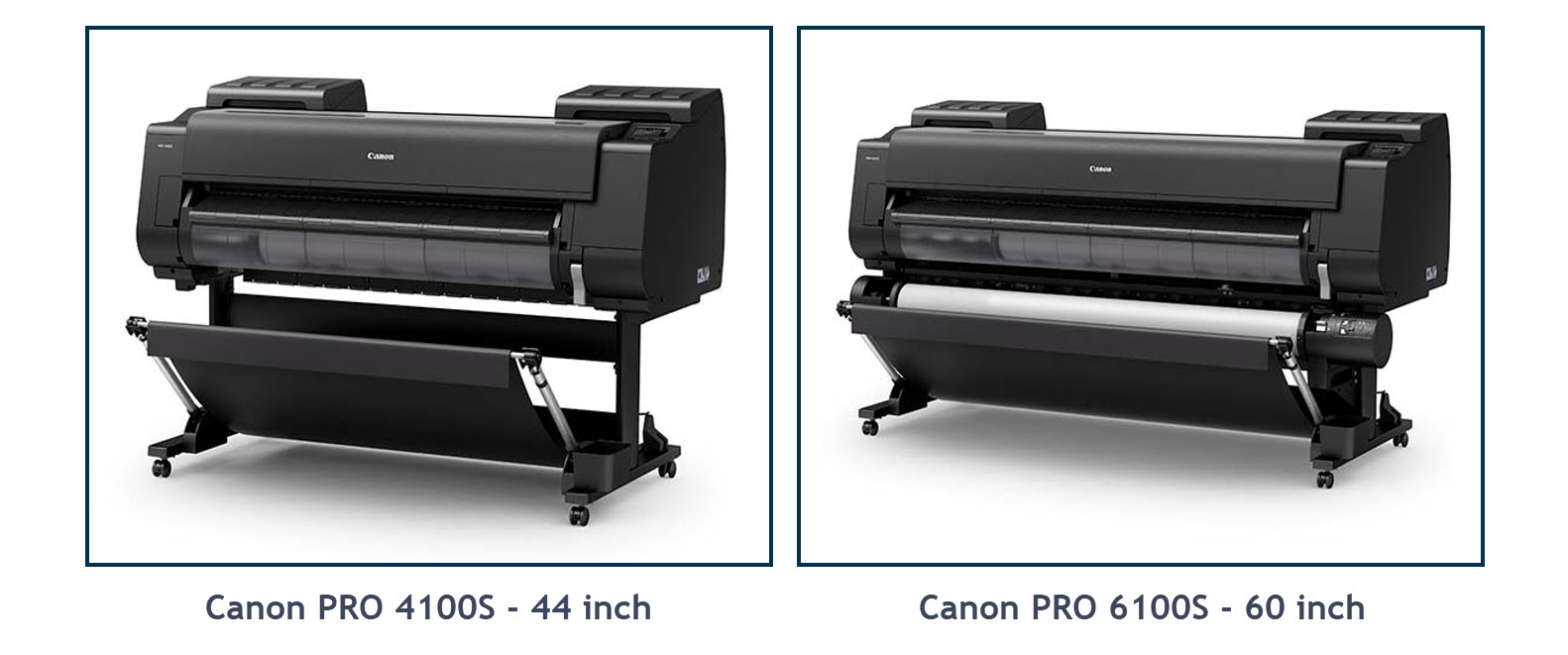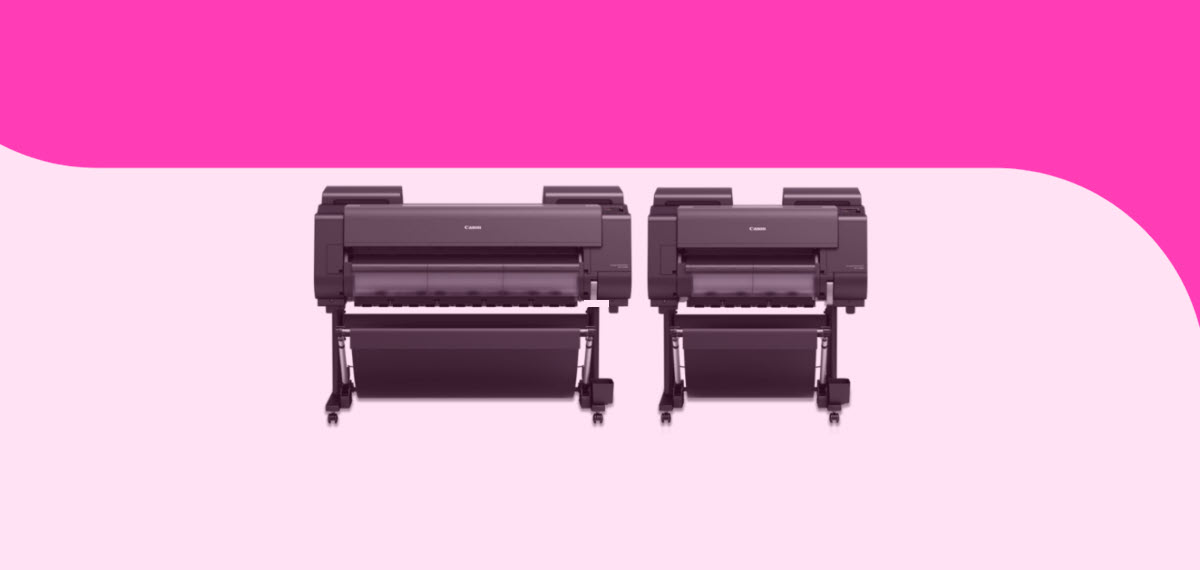For years, LUCIA EX inks have been the staple of the Canon line of imagePROGRAF large-format aqueous printers. These fantastic units are made specifically for photography and fine art applications.
The image quality from a twelve-color printer is unmatched. Many prominent artists in the industry hold these units in the highest regard.

In addition to the professional 12-color photo printers, Canon offers other printers for producing posters and other signage graphics. These include the latest GP Series and the S-Series, 8-color production printers that utilize the prized LUCIA EX ink set.

- Canon imagePROGRAF iPF PRO 4100S – 44” 8-color printer
- Canon imagePROGRAF iPF PRO 6100s – 60” 8-color printer

Explore the Canon GP Series Printers with Fluorescent Pink Ink
But, what is it about the LUCIA EX inks that make them so unique? First of all, LUCIA EX inks are pigments not dyes. Here’s the difference:
- Pigment inks are made of microscopic solid particles suspended in a liquid. These encapsulated particles bond to the surface of a paper or substrate.
- Dye inks are water soluble. Dye ink is simply absorbed into the fibers of the paper. Because of the aqueous nature of dye inks, they will bleed if the printed paper becomes wet.
There are many advantages to using pigment inks over dyes. Pigments are much more water resistant. Also, pigment inks will not fade as dye inks will. Oxygen in the atmosphere and ultraviolet light also play havoc on dye inks.
Canon has taken this concept to the next level with this ink set. Here are some Canon LUCIA EX details:
- Wider color gamut than other inks
- More expressive blacks
- Better scratch resistance – due to improved adhesion of polymers to the substrate
- Smooth Gradiations
- Better image quality in dark areas
- Reduced bronzing
- Reduced metamerism
Read another article that further explores LUCIA EX inks.
Canon’s LUCIA EX inks are beneficial for several industries and applications. Here are a few suggestions:
- Professional photography
- Fine art reproduction and giclee prints
- Proofing – books, magazines, brochures, and other print media
- Indoor posters and banners
- Aerial photographs
- Maps and GIS prints
The article was originally published in 2011 and updated in December 2021.
Tags:

December 10, 2021

Comments